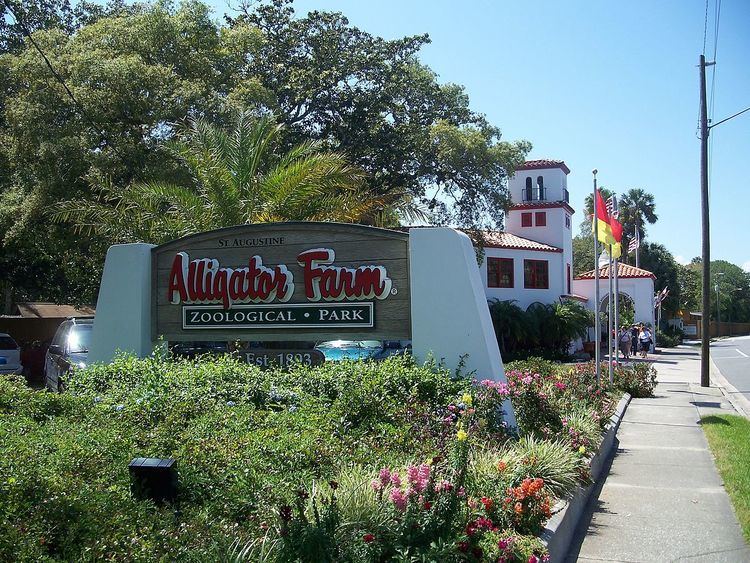Date opened May 20, 1893 Website www.alligatorfarm.com Notable animals Sydney, Maximo | Memberships AZA Opened 20 May 1893 | |
 | ||
Land area more than 7 acres (28,000 m) Address 999 Anastasia Blvd, St Augustine, FL 32080, USA Hours Open today · 9AM–5PMFriday9AM–5PMSaturday9AM–5PMSunday9AM–5PMMonday9AM–5PMTuesday9AM–5PMWednesday9AM–5PMThursday9AM–5PMSuggest an edit Similar Lightner Museum, St Augustine Pirate & T, Fort Matanzas National, Castillo de San Marcos, Ponce de Leon's Fountain | ||
Alligator feeding time at the st augustine alligator farm zoological park
The St. Augustine Alligator Farm Zoological Park is one of Florida's oldest continuously running attractions, having opened on May 20, 1893. Not only does it have 24 species of crocodilians, but also a variety of other reptiles, mammals, and birds, as well as exhibits, animal performances, and educational demonstrations.
Contents
- Alligator feeding time at the st augustine alligator farm zoological park
- St augustine alligator farm zoological park
- History
- Rookery
- National historic status
- Affiliations
- References
St augustine alligator farm zoological park
History
The park began in 1893 on St. Augustine Beach as a minor attraction at the end of a railway running through neighboring Anastasia Island. The alligators were added at first to get visitors to buy souvenirs and see the museum there. Soon the reptiles themselves became the main point of interest.
Growing in popularity, the park moved to its current location in the early 1920s. The park changed owners in the 1930s, and after a devastating fire, they started reconstruction and expansion of the facilities. In 1993, for their 100-year anniversary, the park became the first place in the world to display every species of crocodilian.
As of 2012, this was the only place where one can see every species of alligator, crocodile, caiman, and gharial. Over the years the zoo has expanded to include exotic monkeys, birds, and other reptiles. The bird collection alone boasts some species not often seen in other zoos, including hornbills, cassowary, marabou, Cape griffon vultures, and Pesquet's parrots. In 2008 the zoo opened a new Komodo dragon facility that also exhibits lizards and snakes found within the range of the saltwater crocodile.
Rookery
The back section of the park contains a large bird rookery, where free-roaming local birds species such as egrets, herons, wood storks and roseate spoonbills nest and rear their young.
National historic status
On September 10, 1992, the Alligator Farm was designated a U.S. Historic District. As such, it was referred to as the St. Augustine Alligator Farm Historic District. According to the National Register of Historic Places, it covers less than 1-acre (4,000 m2), and contains 1 building and 1 structure.
Affiliations
The park is a member of the Association of Zoos and Aquariums (AZA) and the Florida Attraction Association.
